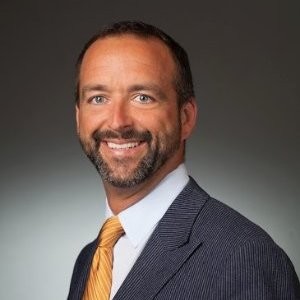Supporting patients aging at home with proactive care and remote monitoring

David Hunt, Founder and Chief Marketing and Development Officer, Cosán Group
Recently, the home-based healthcare market has boomed in terms of interest and investments from payers, which makes sense given the ongoing need to keep high-risk populations healthy and safe from exposure to the potentially fatal coronavirus.
The promise and value of home care has never been clearer for organizations across the care continuum. However, the home care space faces its own unique set of challenges, from staffing struggles to managing disruptions in routine care, all while the patient population they serve grows in both size and complexity.
According to a 2020 survey from Home Health Chartbook, 1 out of every 4 home health patients is over 85 years old and nearly half of home health patients suffer from five or more chronic conditions. While this patient population is more likely than the broader universe of Medicare patients to live by themselves, they’re also likely to have two or more functional limitations.
Caring for an increasingly high-acuity patient population like these older adults is difficult, but environmental challenges presented by the current pandemic, like lack of in-person care and feelings of isolation, have made it even more challenging. To efficiently and effectively care for at-risk adults aging in the home, home care providers need more support and collaboration from provider care teams to ensure older adults get the care they need, when they need it, in order to stay well and out of the hospital.
The value of preventive and proactive care processes
It is important that care teams have the visibility needed to monitor patients’ conditions and any changes in status or behavior to deliver proactive, rather than reactive, care for patients in the home. The key is implementing care processes like chronic care management (CCM) and remote patient monitoring (RPM).
Chronic care management helps to improve patient health outcomes through increased oversight, communication, and collaboration between physician appointments. By formalizing a program of collaborative care management between the physician’s office, home care and any other ancillary providers or care teams involved with a patient’s care journey, the patient is more actively engaged by their care teams across multiple touch points. More engagement and collaboration help to prevent any signs of decline from going unnoticed, allows providers to monitor quality measures, and helps increase patient awareness and adoption of their own care plan objectives.
By utilizing remote patient monitoring (RPM), providers are now able to measure and monitor vitals of interest using personal medical devices in the home that previously required a visit to a doctor’s office, which has become increasingly attractive in the space. While the Centers for Medicare and Medicaid Services expanded coverage for RPM before the pandemic even began, interests in RPM from providers, employers and health plans have grown alongside the rise of at-home care and telehealth use.
RPM likely to grow
According to a Hello Heart survey, 65% of benefits executives believe the use of RPM will only increase among patients moving forward. Including RPM technology in a patient’s care plan allows providers to collect important vitals and patient data, despite location, that provides a more comprehensive view of the patient in the home. More visibility into how patients are doing in the home allows care teams to proactively identify risks and home care providers to deliver preventative care before said patient requires a trip to the hospital.
Technology-driven preventive care services and programs like chronic care management and remote patient monitoring are proven to improve overall care and clinical outcomes for older adults aging at home. As the home care patient population increases in size and the acuity of patients becomes more complicated, more proactivity and data-driven insight will support home care providers in delivering efficient, informed and effective care to these patients.
More patients, more complex conditions and more risks for potential decline demand additional support for providers — and remote technology and digital collaboration can help fill in the gaps and ensure higher quality care moving forward.
David Hunt is the founder and chief marketing and development officer at Cosán Group, an industry-leading healthcare organization creating new pathways to modern aging with technology-driven preventative care services.
View this post on https://www.mcknightsseniorliving.com/home/news/home-care-daily-news/supporting-patients-aging-at-home-with-proactive-care-and-remote-monitoring/

